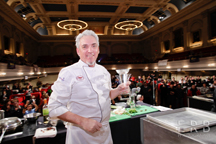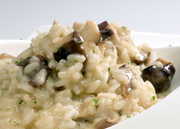 Today is the Tuesday before Ash Wednesday, traditionally referred to as Fat Tuesday in the United States. Catholics all around the world consider Fat Tuesday a day of indulgence before beginning 40 days of fasting and prayer known as Lent. But in the United Kingdom and several other countries around the globe, many know it as Pancake Day or Pancake Tuesday.
Today is the Tuesday before Ash Wednesday, traditionally referred to as Fat Tuesday in the United States. Catholics all around the world consider Fat Tuesday a day of indulgence before beginning 40 days of fasting and prayer known as Lent. But in the United Kingdom and several other countries around the globe, many know it as Pancake Day or Pancake Tuesday.
Making pancakes started as a means of using food often found unsuitable during Lent, such as eggs, milk, and sugar. In fact, the centuries-old tradition of pancake races, where women tossing pancakes in a frying pan race to the finish line, continues today in the small English town of Olney in Buckinghamshire. The town of Liberal, Kansas has also adopted this tradition. But whether you call it tradition or just a love for something warm and sweet, pancakes are good any time of year.
We came across some unusual pancake recipes in a recent New York Times article that are sure to make you smile. They may take a little longer to prepare than Aunt Jemima’s, but they’re worth it. It’s all about indulgence, right? Enjoy!
Cornmeal Pancake Recipe with Vanilla and Pine Nuts
- 1-1/2 cup fine or medium cornmeal
- 1 teaspoon salt
- ½ cup milk (or more as needed)
- 2 tablespoons vegetable or olive oil, plus more for frying
- 1 teaspoon vanilla extract
- ½ cup pine nuts
- Honey for serving
Heat the oven to 200 degrees. Combine the cornmeal, salt and 1-1/2 cups boiling water in a bowl and let it sit until the cornmeal absorbs the water and softens, 5-10 minutes.
Stir in the milk, a little at a time, until the batter is spreadable but still thick. Stir in 2 tablespoons oil, the vanilla and the pine nuts.
Put a large skillet or griddle over medium heat. When a few drops of water dance on its surface, add a thin film of oil and let it become hot. Spoon out the batter, making any size pancake you like. Cook until bubbles form on the top and burst and the underside is golden brown, 3-5 minutes; turn and cook on the other side until golden. You may have to rotate the cakes to cook them evenly depending on the heat source and pan. As they finish, transfer them to a plate in the oven while you cook the remaining batter. Serve with honey.
Yields: 4 servings
Cardamom-scented Oatmeal Pancake Recipe with Apricots & Almonds
- ¼ cup whole-wheat flour
- ¼ cup all purpose flour
- ¼ cup rolled oats
- 1/3 cup chopped almonds
- 1 teaspoon baking powder
- 1 teaspoon ground cardamom
- ¾ teaspoon salt
- 1 egg
- ½ cup milk
- 2 cups cooked oatmeal
- 1/3 cup chopped dried apricots
- Vegetable or olive oil for frying
- Honey for serving
Heat the oven to 200 degrees. Combine the flours, oats, almonds, baking powder, cardamom and salt in a large bowl.
In a separate bowl, whisk together the egg and milk; stir in the cooked oatmeal and the apricots until just incorporated. Add the oatmeal mixture to the dry ingredients and stir gently; don’t overmix. The consistency should be that of thick pancake batter; add a little more milk or whole-wheat flow as needed.
Put a large skillet or griddle over medium heat. When a few drops of water dance on its surface, add a thin film of vegetable oil and let it become hot. Spoon out the batter, making any size pancake you like. Cook until bubbles form on the top and pop, 2-3 minutes. Carefully flip the pancakes and cook until they’re browned on the other side, a couple of minutes more. You may have to rotate the cakes to cook them evenly depending on the heat source and pan. As they finish, transfer them to a plate in the oven while you cook the remaining batter. Serve with honey.
Yields: 4-6 servings
Pancake Recipes from New York Times, January 19, 2011, Mark Bittman
 England is the home of this old-fashioned dessert made of cooked, pureed fruit that is strained, chilled and folded into whipped cream. Fool is traditionally made from gooseberries, though any fruit may be used. Strawberry fool is best when the fruit is mashed rather than pureed, giving it a more appealing texture.
England is the home of this old-fashioned dessert made of cooked, pureed fruit that is strained, chilled and folded into whipped cream. Fool is traditionally made from gooseberries, though any fruit may be used. Strawberry fool is best when the fruit is mashed rather than pureed, giving it a more appealing texture. Today is the Tuesday before Ash Wednesday, traditionally referred to as Fat Tuesday in the United States. Catholics all around the world consider Fat Tuesday a day of indulgence before beginning 40 days of fasting and prayer known as Lent. But in the United Kingdom and several other countries around the globe, many know it as Pancake Day or Pancake Tuesday.
Today is the Tuesday before Ash Wednesday, traditionally referred to as Fat Tuesday in the United States. Catholics all around the world consider Fat Tuesday a day of indulgence before beginning 40 days of fasting and prayer known as Lent. But in the United Kingdom and several other countries around the globe, many know it as Pancake Day or Pancake Tuesday.


 When traditionally made, risotto is delicious gluten-free dish. Arborio rice is a good source of complex carbohydrates and protein, making risotto a nutritious choice for those who cannot eat wheat or other gluten-containing grains.
When traditionally made, risotto is delicious gluten-free dish. Arborio rice is a good source of complex carbohydrates and protein, making risotto a nutritious choice for those who cannot eat wheat or other gluten-containing grains.